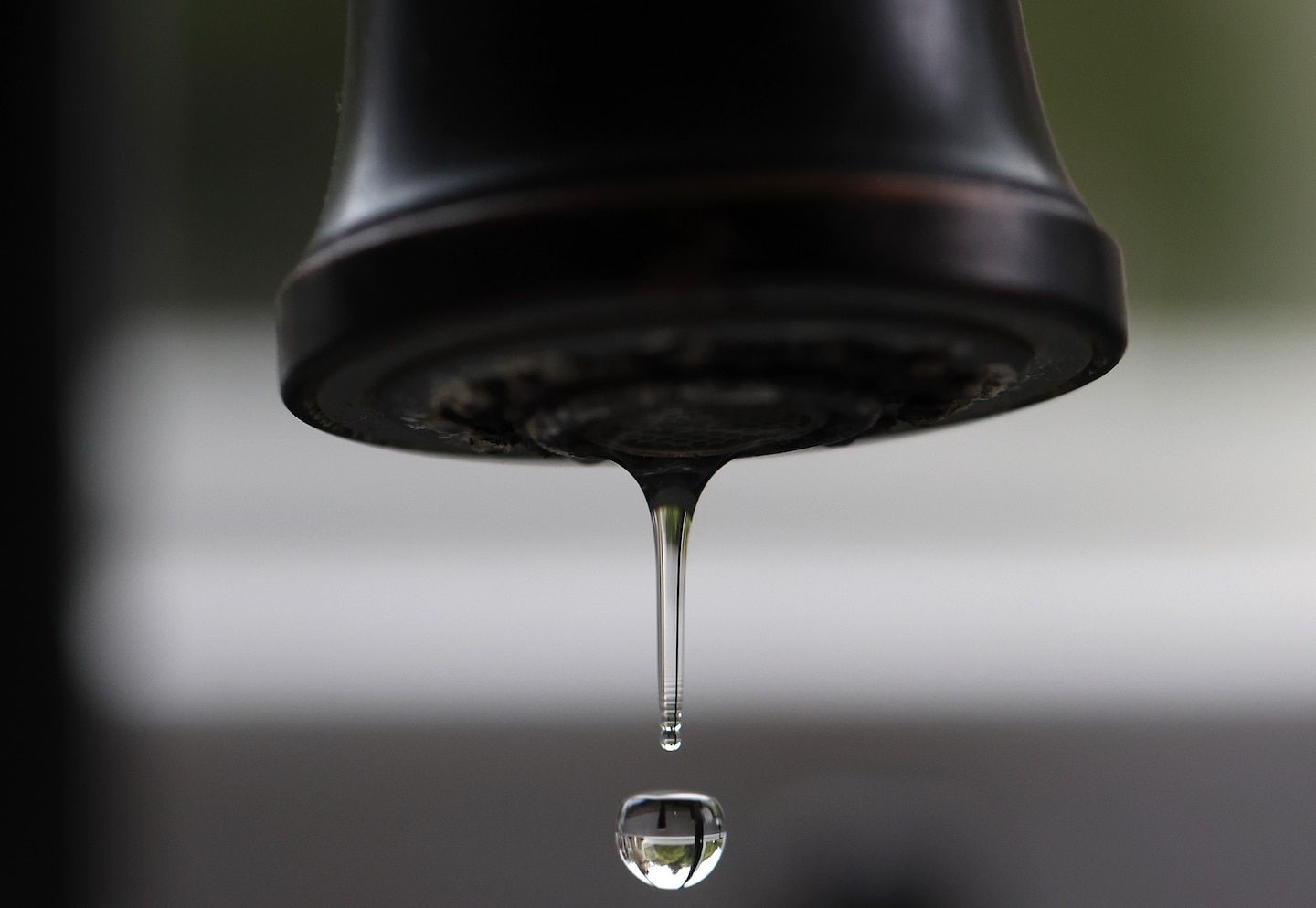Nearly half of all U.S. tap water contains forever chemicals, study says
Listen 5 min Comment on this story Comment Gift Article Share
In the latest evidence of the pervasiveness of “forever chemicals,” a new study from the United States Geological Survey (USGS) estimates that these contaminants now taint nearly half of the nation’s tap water. Want to know how your actions can help make a difference for our planet? Sign up for the Climate Coach newsletter, in your inbox every Tuesday and Thursday. ArrowRight The federal study, one of the most extensive of its kind looking directly at water coming out of a tap, adds to a body of research showing that PFAS — per- and polyfluoroalkyl substances — chemicals are not only long-lasting but widespread in drinking supplies.
PFAS refers to more than 12,000 chemicals that persist in the environment and can build up in the body. They are widely used in industry and consumer products, ranging from clothing and cosmetics to fast-food wrappers and microwave popcorn bags.
“Millions of people have been drinking a toxic forever chemical linked to cancer all their lives and are only discovering it today,” Scott Faber, the senior vice president for government affairs at the Environmental Working Group, said Thursday on the research.
Advertisement
Studies are steadily documenting the ubiquity of this class of chemicals. A 2015 report by the Centers for Disease Control and Prevention found PFAS in the blood of over 95 percent of Americans.
Exposure to PFAS has been associated with severe health risks, including some kinds of cancers, developmental delays in children and reproductive effects in pregnant people, although the Environmental Protection Agency states that “research is still ongoing to determine how different levels of exposure to different PFAS can lead to a variety of health effects.”
The researchers behind the USGS study analyzed water collected from over 700 taps and kitchen faucets in homes, offices and schools across the country, USGS research hydrologist Kelly Smalling, the study’s lead author, said. This included protected lands, residential areas with no known PFAS sources and locations close to industry or waste sites at high risk for the toxic chemicals.
Advertisement
They then tested the water for the presence of 32 types of PFAS. (Though there are thousands of types of these chemicals, the researchers focused on the few that can be analyzed at this time, Smalling said.)
Smalling even contributed some water from her home in New Jersey. Testing showed that her water, too, was contaminated.
“It’s not a surprise,” she said. “New Jersey is a hot spot for PFAS.”
The researchers more frequently detected PFAS in urban areas or areas next to potential sources of the chemicals such as airports, industry and wastewater treatment plants, Smalling said. She estimated that about 75 percent of urban tap water has at least one type of PFAS present, compared with about 25 percent of rural tap water.
The chemicals were also more prevalent in the Great Plains, Great Lakes, Eastern Seaboard and central and Southern California regions, according to the study.
Advertisement
The USGS hailed the research as the first time scientists have broadly tested for and compared PFAS in tap water from both private and public water suppliers nationwide. PFAS concentrations were similar between the two sources, according to the study.
“We specifically focused on collecting water directly from a homeowners’ tap, where the exposure actually occurs,” Smalling said.
Outside experts said the findings on the widespread nature and distribution of PFAS in drinking water were to be expected, given previous work done on the subject. One study published in 2020 by scientists at the Environmental Working Group estimated more than 200 million Americans could have PFAS in their drinking water.
“[The] findings are not surprising,” wrote Linda Birnbaum, the former director of the National Institute of Environmental Health Sciences and the National Toxicology Program.
Advertisement
Elsie Sunderland, a professor of environmental chemistry at Harvard, added that the numbers are “alarming” but cautioned that the sample size could be too small to draw sweeping assumptions from the USGS study alone.
“I would be careful in extrapolating that conclusion to the entire country,” she said.
Though PFAS have been on experts’ radar for years, public awareness has recently been on the rise, putting pressure on lawmakers and companies to act.
In March, the Environmental Protection Agency proposed the first drinking water standard for some PFAS and has said it expects a final rule by the end of the year, though delays are common. The manufacturing giant 3M also announced at the end of June that it had reached a sweeping settlement with U.S. cities and towns to pay $10.3 billion over 13 years to cover testing for and cleaning up PFAS in water supplies across the country.
Advertisement
States are also stepping up action on PFAS, including through legislation banning or restricting the use of PFAS in everyday products and implementing drinking water standards. Some states — such as Maine and Minnesota — have moved beyond blocking the use of chemicals in specific products to implement more sweeping protections.
Carmen Messerlian, an assistant professor of environmental, reproductive, perinatal and pediatric epidemiology at Harvard, said policymakers are staring to address just “the tip of the iceberg.”
“We need to regulate the companies that are producing these chemicals,” she said. “By the time they hit our water, our food, our children’s mouths and our bodies, it really is too late.”
PFAS are difficult to avoid entirely, but there are steps one can take to reduce their exposure, experts said. Water filters that can remove PFAS are a powerful tool, though the most effective filters can come at a cost that not everyone can afford, Messerlian said.
Smalling said Americans concerned about their water can contact their local health officials for more information about testing or treatment.
“We really hope that this study gives the average American some information about the quality of their drinking water,” she said.
Gift this article Gift Article
Source: The Washington Post


